It was the summer of 2010 when Jim Seals and Dash Crofts, the names behind Seals & Crofts, infiltrated my musical consciousness. This duo, kings of the 70s AM radio waves, were responsible for a string of incredibly infectious hits. Tracks like “Diamond Girl,” “Get Closer,” “We May Never Pass This Way Again,” and the iconic “Summer Breeze” were staples of the era. “Summer Breeze,” in particular, with its laid-back vibe, could make even the mundane act of setting the dinner table feel imbued with romance. Like many from Generation X, I was passively familiar with these hits, a result of childhood osmosis, you might say. Every car journey was soundtracked by the sugary sweetness of AM radio, a constant stream of tunes permeating the developing brains of my brother and me. This sonic asbestos, as I jokingly call it, filled the air of our quintessential 70s family vehicles. There was the station wagon, where we kids bounced around in the back, the blue Econoline van, offering even more violent pinballing opportunities, and most memorably, my Mom’s white Chevy Nova. This Nova, adorned with a massive sunflower – a hippie touch courtesy of my mother – became a local landmark, often prompting classmates to inform me, “I saw your Mom’s car today.” While I appreciate the car’s uniqueness now, back then, it was a source of unspeakable humiliation.
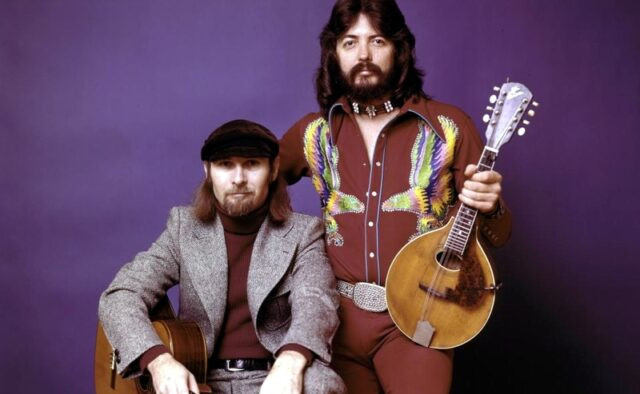 White Chevy Nova with a sunflower, symbolizing 70s family car culture and childhood memories.
White Chevy Nova with a sunflower, symbolizing 70s family car culture and childhood memories.
Forgive the digression, but that car was truly something. To be fair, I genuinely enjoyed some of the songs that filtered through the Nova’s speakers. While I wasn’t rushing to spend my allowance money on them, I might hum along under my breath to tunes like Captain & Tennille’s “The Way That I Want To Touch You” or the Eagles’ “One Of These Nights.” I was open to a good hook, but Seals & Crofts, or S&C as they are sometimes known, never quite grabbed my full attention. It wasn’t just that their songs didn’t resonate on a basic level; they also failed to meet my critical, non-negotiable standards for pop music infatuation as a young girl: they didn’t rock, and the members weren’t exactly pin-up material.
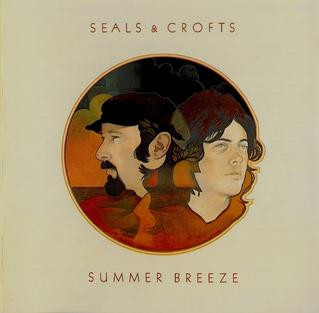 Seals and Crofts in a promotional shot, showcasing their 70s soft rock image.
Seals and Crofts in a promotional shot, showcasing their 70s soft rock image.
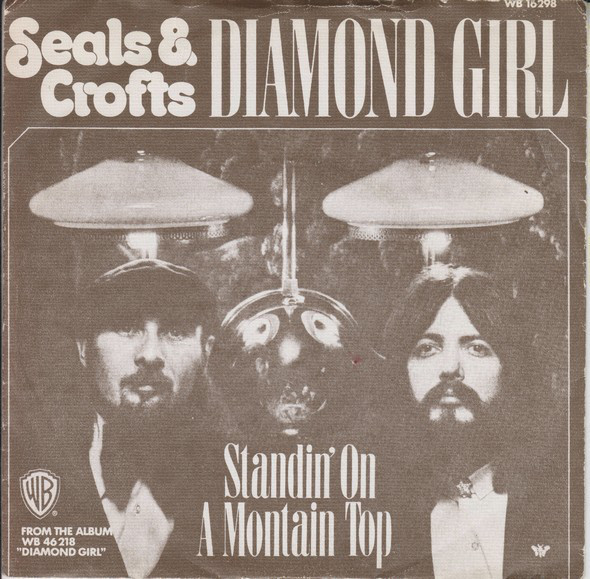 Seals and Crofts album cover showcasing their 70s aesthetic and musical style.
Seals and Crofts album cover showcasing their 70s aesthetic and musical style.
 Another Seals and Crofts album cover reflecting their 1970s music era.
Another Seals and Crofts album cover reflecting their 1970s music era.
Delving Deeper into the Seals & Crofts Discography
Interestingly, Seals & Crofts’ three biggest hits all peaked at number 6 on the Billboard Pop Chart. A quirky coincidence, perhaps even a little…666-ish. Just saying.
Yet, fast forward to 2010, and there I was, eagerly digging through their entire recorded catalog on iTunes. Like a musical archaeologist, I painstakingly cherry-picked songs that sounded intriguing, compiling them into a playlist. And in a twist reminiscent of preferring the packing peanuts to the actual gift, I found myself far more fascinated by the deep cuts, the songs I’d never heard before, than the familiar hits. Once assembled, this roughly 10-12 song “Ultimate Seals & Crofts Playlist” became my daily companion. It played on the train to work, during loops around Central Park, and even while washing dishes. For two solid months, July and August, it was as if I was living in a 70s AM radio version of “Invasion of the Body Snatchers.” Some soft-focus, earth-shoe-wearing, incense-burning, hang-gliding, Chevy van-driving, ambiguously spiritual, herbal essence shampooing, Tab-drinking ghost had taken up residence within me and seized control of my musical taste. What sparked this? The sweltering July heat? Flashes of childhood memories chasing fireflies in the backyard? What in the world was happening?
 Inner sleeve of Seals & Crofts' 'Unborn Child' album, highlighting controversial lyrical content.
Inner sleeve of Seals & Crofts' 'Unborn Child' album, highlighting controversial lyrical content.
The Curious Case of “Unborn Child”
Let’s get a bit factual for a moment, but I promise to keep it brief. The image above is the inner sleeve of Seals & Crofts’ 1974 album, Unborn Child, featuring the lyrics of the title track. These lyrics were penned by Lana Bogan, the wife of the duo’s recording engineer, Joseph Bogan, and then set to music by Seals & Crofts. Released as a single, the song’s controversial subject matter led many radio stations to refuse airplay, particularly in the wake of the Roe v. Wade decision in 1973. Consequently, it only reached #66 on the Billboard pop chart (wait, another 66?). Despite the single’s lukewarm reception, Seals & Crofts’ popularity was such that the album itself still climbed into the Top 20 and eventually achieved Gold status.
Now, for a confession. About a year before my official Seals & Crofts obsession began, I had actually purchased one of their LPs. Yes, you guessed it, the infamous Unborn Child. It cost a mere dollar, acquired along with a stack of other cheap records from a NYC street vendor selling albums out of sidewalk crates. My initial reaction upon seeing the album title and reading the lyrics on the inner sleeve was a resounding “what the f*ck.” Knowing Seals & Crofts’ popularity at the time of Unborn Child‘s release, it felt…off. It seemed almost insidious, packaging such a loaded sentiment onto an album at the height of their fame, banking on fans won over by their sweeter hits to blindly purchase it. Even though it was already 35 years old, I couldn’t quite let it slide. So, I bought it as a curio, a historical artifact, a bizarre 70s relic to share incredulously with fellow music nerds. I bought it because it made me (mildly) angry. It seems counterintuitive, I know, but we’ve all done similar things, right? Bought a dated book with debunked theories or a strangely shaped fruit, just to have it, to be amused, astounded, or to entertain friends. That’s all it was to me, this thing to occasionally brandish and ask, “Have you ever seen this?” I confess I never actually listened to it, not until the 2010 Seals & Crofts obsession took hold. Which is to say, yes, that sleeve pic above is indeed of my own copy.
My deep-seated disdain for the song (and album title) didn’t derail my Seals & Crofts Summer Love Experience, though. We had a difference of opinion, sure, but I mean, I didn’t agree with everything my beloved Prince sang or said over the years, so allowances were made. Seals & Crofts and I, we simply agreed to disagree.
 Cal Jam promotional image, highlighting the diverse lineup including Seals & Crofts.
Cal Jam promotional image, highlighting the diverse lineup including Seals & Crofts.
Seals & Crofts at Cal Jam and the 70s Vibe
This Cal Jam lineup is insane for more reasons than I can count.
Thankfully, someone had the foresight to document this incredible event for posterity. Want to witness Dash Crofts in a striking white suit and shades, radiating rock star coolness, and behold some truly inspired interpretive dance from denim-clad audience members, all soundtracked by “Diamond Girl”? Of course, you do. Cast your eyes here. Furthermore, I highly recommend watching this vintage intro to a TV broadcast of Cal Jam here, as the last couple of minutes are pure gold. And one last gem, Jim Dandy to the rescue. Truthfully, watching the audience reveling in Cal Jam is even more entertaining than the actual show. It’s a sea of sun visors, jeans, and mustaches – Lindas and Susies, Mikes and Tommys – and undoubtedly, a staggering amount of weed, though unseen.
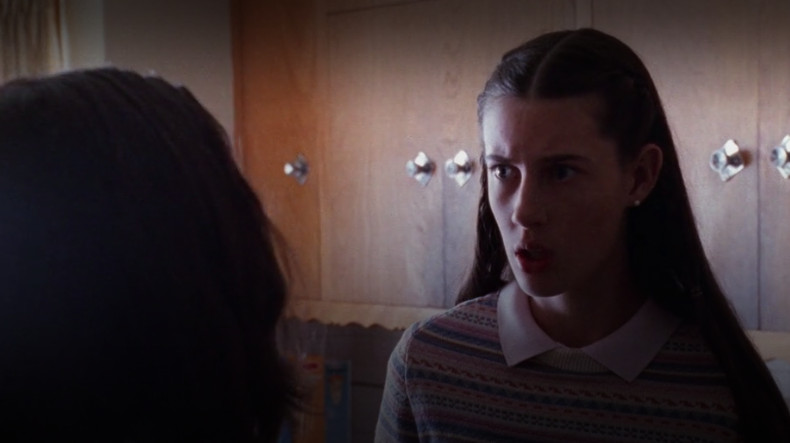 Screenshot from Freaks and Geeks, featuring a quote about high people at a Seals & Crofts concert.
Screenshot from Freaks and Geeks, featuring a quote about high people at a Seals & Crofts concert.
The Feeling Beyond the Faith: Connecting with Seals & Crofts Songs
“I’m not dumb Lindsay, I know what high people look like. I went to a Seals & Crofts concert last summer!”
Quote from Millie (Freaks and Geeks Episode 13)
Listening to Aretha Franklin’s Amazing Grace album or watching its companion documentary doesn’t require sharing her faith, or any religion for that matter (unless worshipping Aretha herself counts, hallelujah). Experiencing both is visceral; the raw emotion transcends specifics, it’s about a feeling. Now, before you jump to conclusions, I’m not equating Aretha with Seals & Crofts. However, the Amazing Grace experience provides a useful analogy. While delving into the S&C discography, I discovered their long-time devotion to the Baha’i Faith. References to its tenets subtly weave into some lyrics, present if you listen closely, but never aggressively proselytizing. This faith aspect didn’t color my listening experience; it was more about the overall feeling the music evoked. Like the Queen of Soul’s Amazing Grace, Seals & Crofts’ music, for me, is about capturing a feeling, evoking non-religious sentiments – like those childhood Saturdays eating McDonald’s outside, tossing fries to birds on hot 70s afternoons. Does that resonate? It’s a feeling.
Unpacking the Musicality: What Makes Seals & Crofts Songs Tick?
“Cause You Love” is a wake-up call to humanity, delivered as gently as being struck with a pillow stuffed with cotton balls, and I adore it.
What did my deep dive into the Seals & Crofts discography reveal musically? Crofts’ voice, quirky and occasionally cartoonish, harmonized best with Seals, who typically took the lead vocals. Lyrically, things could get hazy, but the overall tone remained sunny. Even their more serious or melancholic songs were brimming with melodic optimism. “Cause You Love” acknowledges heavy and hard times, yet the melody radiates sunshine. “Baby Blue,” a song about leaving a partner to explore, sounds so joyful and polite in its sentiment that behaving like a restless heartbreaker seems as innocent as flying a kite. “Million Dollar Horse,” a laid-back plea for closeness, cleverly incorporates a “chk” sound in the chorus, subtly mimicking spur kicks. “Desert People,” explicitly referencing the Baha’i faith with lines like “let your sweet rain fall on me, for I am dying, we’re desert people and we’re in pain, but we’re still trying,” still sounds like the perfect driving music for a beach trip. “I Keep Changing The Faces,” describing a serial dater “in love with love,” is set to a groovy, Doobie Brothers-esque backdrop, making him sound like the most charming lounge lizard imaginable. And even “If and Any Day,” dripping with regret and a plea for divine assistance, could easily be the theme song for a 70s movie about roller skating at Venice Pier. Seals & Crofts songs are fueled entirely by the pure, unadulterated essence of a 70s summer breeze.
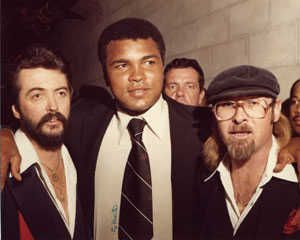 Muhammad Ali listening to Seals & Crofts, demonstrating their widespread appeal.
Muhammad Ali listening to Seals & Crofts, demonstrating their widespread appeal.
A Summer Fling with Seals & Crofts: Lasting Impressions
If it’s cool enough for THE GREATEST, then it’s clearly cool enough for us all.
My Seals & Crofts obsession was, in essence, a summer fling. A sweet memory that resides mostly in the rearview mirror. While a handful of tracks remain in my regular rotation, played occasionally when the mood strikes, I haven’t revisited that intense July and August immersion, haven’t felt the urge to dust off that old playlist.
As a child, I kept a scrapbook of celebrity obituaries and admittedly had a tenuous grasp on “carefree” and “happy.” A neighborhood kid even labeled me “mad at the world,” which, at the time, annoyed me (if only I’d known the word “pragmatic” then!). Perhaps, in a strange way, my Seals & Crofts infatuation connected to this. They were the sonic embodiment of innocent, carefree 70s kid days, a feeling I wanted to grasp and retroactively apply to my past. Their inherent musical lightness and laid-back groove felt deeply in sync with that era, or at least with my idealized perception of it. Truth be told, it was incredibly fun, this random obsession with a band from yesteryear, for reasons both understood and completely baffling. The whole experience was wonderfully weird, and I wholeheartedly recommend embracing such unexpected musical detours and wish them for everyone. I’ll conclude with a sentiment that will never age, because, well, yeah, I simply have to…

